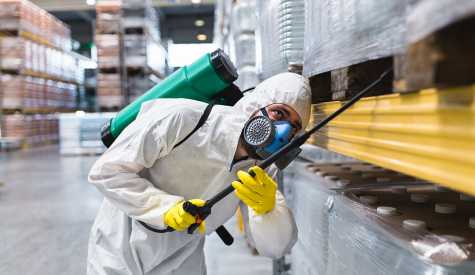Salmonella Control in Food Manufacturing

The CDC estimates that approximately 1.35 million illnesses and 420 deaths occur due to non-typhoidal Salmonella annually in the United States, and the annual incidence of Salmonella infection was 15.2 illnesses per 100,000 individuals.
Why is Salmonella so dangerous?
The many strains of Salmonella are responsible for more hospitalizations and deaths than any other foodborne microorganism. Despite strict controls implemented by the Food and Drug Administration and other federal regulators, Salmonella infections have not decreased in the last fifteen years. Common sources of Salmonella in the food processing and manufacturing industries include:
- Fecal matter and intestinal contents from animals, including livestock, pests, and humans
- Dirt and soil
- Raw ingredients, especially poultry
- Dirty packaging
- Workers’ hands and clothing
Salmonella can survive at wide pH and temperature ranges. It can even lay dormant for long periods of time on surfaces and in foods, including dried grains. A single cell of Salmonella bacteria can cause illness in at-risk individuals, including people who are pregnant, young, elderly, or have weakened immune systems, so there are no acceptable levels for Salmonella contamination in food products.
How can I prevent the spread of Salmonella in my facility?
Food manufacturing and processing plants are the first line of defense against Salmonella. Your employees must be trained on proper cleaning and sanitizing procedures, handwashing procedures, and contamination prevention procedures. Your facility should have special measures in place to prevent Salmonella contamination in finished products and product packaging, and to prevent cross-contact between raw ingredients and ready-to-eat foods. You should train your employees on proper hygiene, with an emphasis on handwashing procedures, and have supervisors regularly check that all procedures are being followed. Your Hazard Analysis and Critical Control Points Plan (HACCP plan) should detail the specific approaches that your facility will use to prevent Salmonella contamination. Salmonella can be killed through cooking and sanitation processes.
Conclusion
Salmonella is responsible for more hospitalizations and deaths than any other foodborne pathogen. Your facility must have specific cleaning and sanitizing procedures in place to prevent Salmonella from contaminating food products and to kill any Salmonella bacteria that many be present in ready-to-eat foods or other finished products. All employees must be trained on the dangers of Salmonella and other foodborne illnesses and how to prevent the spread of foodborne pathogens in their facility.
This blog is part of a food manufacturing safety series. For more topics, visit the blogs below:
Listeria Control in Food ManufacturingFloor and Drain Cleaning in Food ManufacturingForeign Material Control in Food ManufacturingCleaning and Sanitizing in Food ManufacturingHow Are Food Manufacturing Workers Protected From Chemical Exposure?Current Good Manufacturing Practices in Food ProductionHow do Food Manufacturers Use Hazard Analysis and Critical Control Point (HACCP) Plans to Protect Consumers?12 Ways Food Manufacturers Protect Consumers Who Suffer From Food AllergiesFood DefenseProper Hand Hygiene and Handwashing in Food Manufacturing

